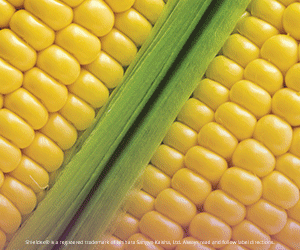Research roundup
FIND OUT WHAT’S NEW IN THE WORLD OF RESEARCH
Keep soil quality in mind if switching to biofuel production
Samantha Beattie
If corn or soybean producers are considering switching to biofuel crops such as miscanthus and switchgrass, it could be at the expense of soil quality, says a University of Guelph microbiologist.
Prof. Kari Dunfield says in grain production, carbon-rich residue is left behind; but in biofuel production, the grass residue is harvested along with the stalks. This practice could potentially lead to less carbon being absorbed into the soil.
But there’s a flip side to this. Dunfield says it’s important to remember farmers also have to consider that biofuel crops are much larger, as much as eight feet in height. They have huge root systems, which might actually contain enough carbon to cancel out adverse effects.
These are the kinds of scenarios and questions Dunfield is addressing in her pursuit to provide producers with clear information about how they can best maintain environmentally stable production systems.
Others involved in this research are graduate student Karen Thompson and Plant Agriculture Prof. Bill Deen.
Funding is provided by the Ontario Ministry of Food, Agriculture and Rural Affairs and the Ministry of Economic Development and Innovation’s Early Researcher Award. •
Big potential from tiny corn particles
Natalie Osborne
Ontario corn fields could one day be the source of not only food, feed and fuel but also eco-friendly paints, age-defying super-moisturizers and non-toxic drug treatments — all thanks to tiny particles generated from Ontario corn.
Physics researchers Prof. John Dutcher and Anton Korenevski say these particles could serve as non-toxic, biodegradable replacements for petroleum-based ingredients. This could make any product more environmentally friendly, be it paint, cosmetics or even biomedical treatments.
The researchers are now working with corn specialist Greg Stewart of the Ontario Ministry of Agriculture, Food and Rural Affairs (OMAFRA) to determine which corn varieties and harvesting practices yield the most particles.
“With Ontario corn, we now have a natural renewable source that will help pave the way to greener products,” says Dutcher.
Funding for this research was provided by the OMAFRA-U of G Partnership. Other team members include Erzsebet Papp-Szabo. •
Whole grains in mac and cheese
Katharine Tuerke
Consumers are lining up for more whole grain products, but companies must make sure taste isn’t sacrificed in this drive for healthier eating.
Case in point: macaroni and cheese. In collaboration with Kraft Mills of Mississauga, food science Profs. Lisa Duizer and Koushik Seetharaman and master’s student Ryan West are trying to determine just how much whole grain can be incorporated into the low-cost staple.
They’re making progress. A trained panel tested the taste, flavour and texture of macaroni made from zero, 25, 75 and 100 percent hard white flour. Cooking quality was also assessed.
It turns out that as the amount of bran increased, the pasta became rougher, less firm and more bitter.
Next, the researchers will try to find out how much consumers enjoy the pasta, as whole grain content increases.
Funding for this project was supported by MITACS-Accelerate. •
Research Roundup is provided by members of SPARK (Students Promoting Awareness of Research Knowledge) at the University of Guelph’s Office of Research. For more information, contact a SPARK writer at 519-824-4120, ext. 52667.







